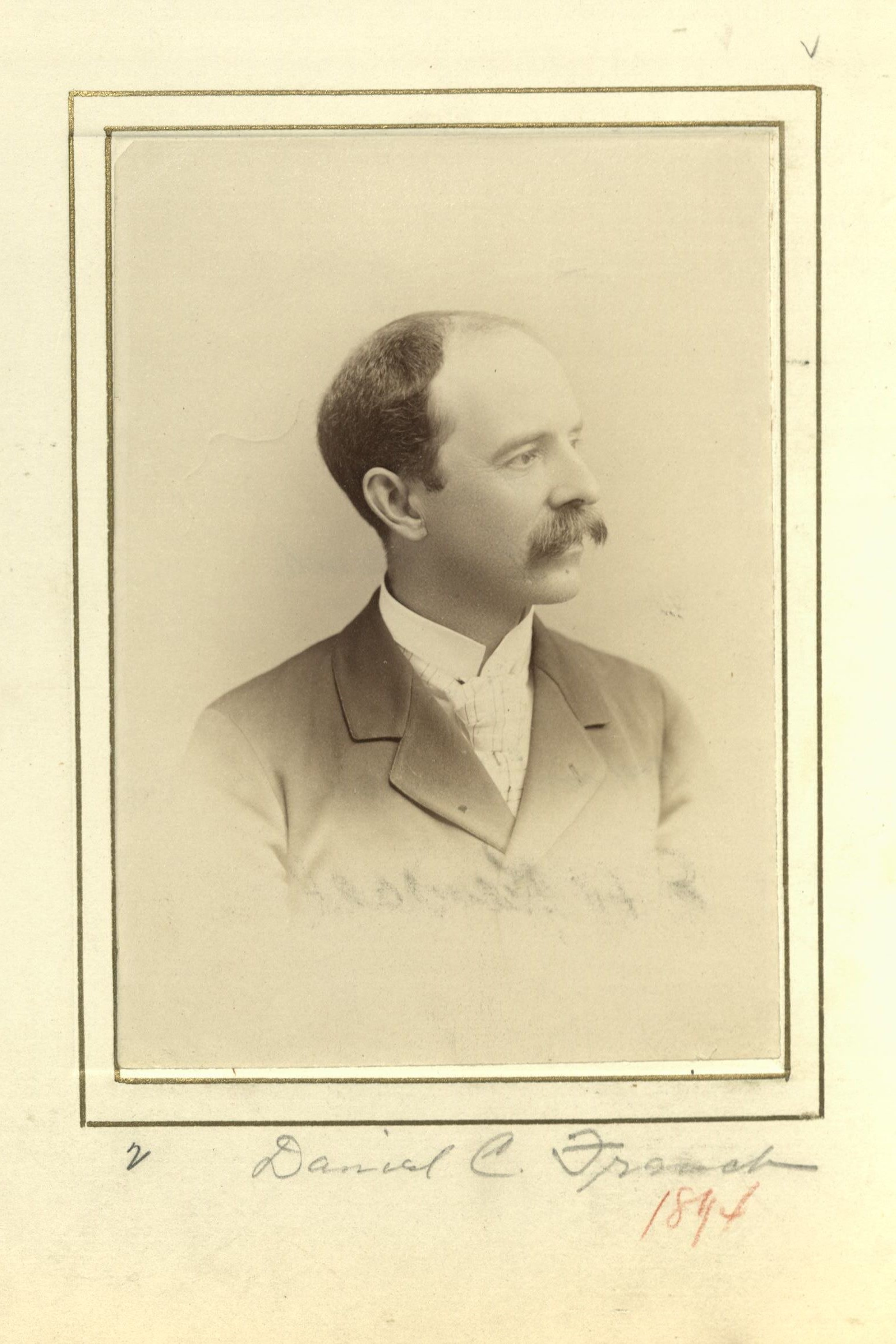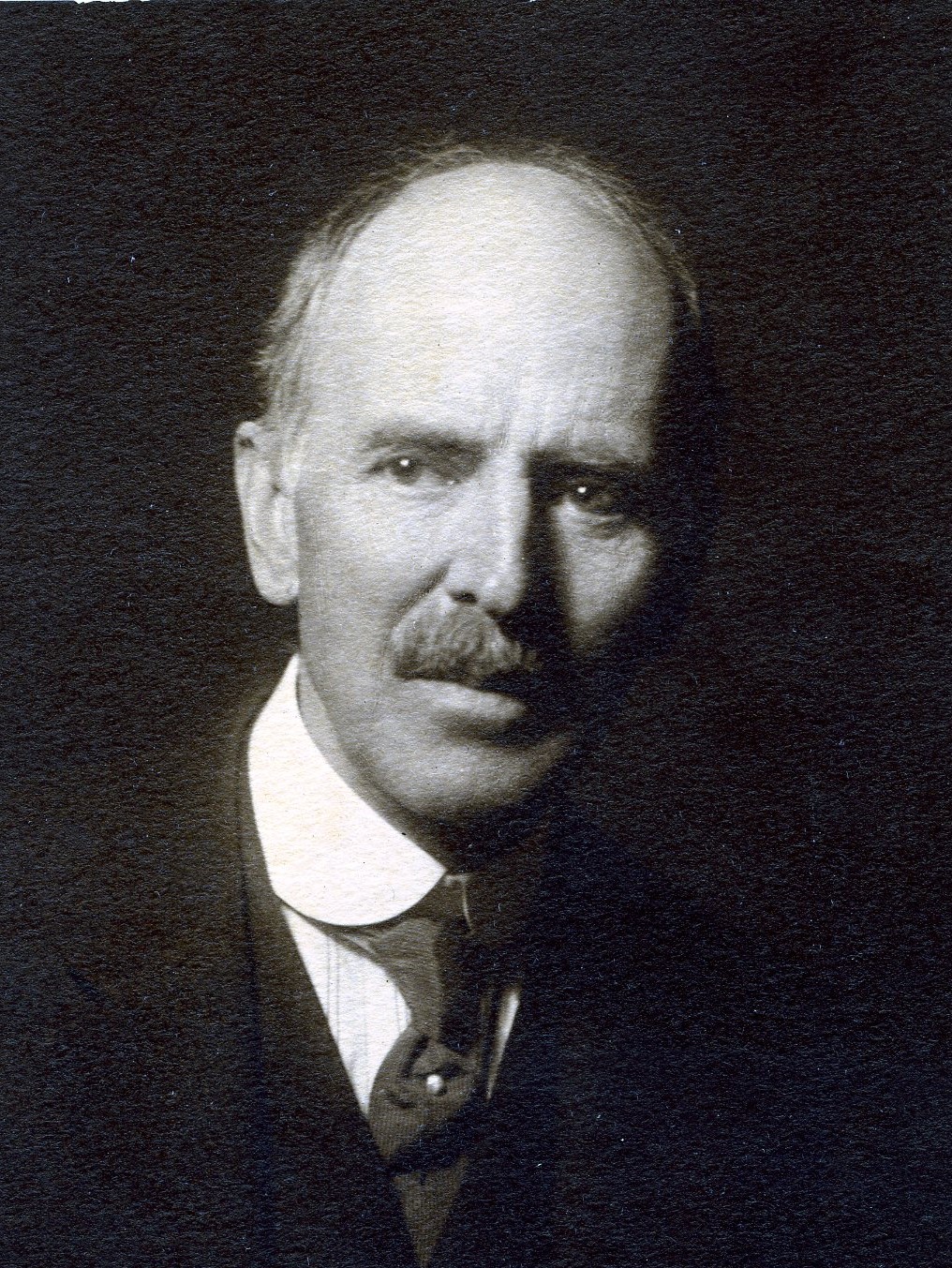Sculptor
Centurion, 1894–1931
Born 20 April 1850 in Exeter, New Hampshire
Died 7 October 1931 in Stockbridge, Massachusetts
Buried Sleepy Hollow Cemetery , Concord, Massachusetts
, Concord, Massachusetts
Proposed by Augustus Saint-Gaudens, Will H. Low, and John Q. A. Ward
Elected 5 May 1894 at age forty-four
Proposer of:
Seconder of:
Century Memorials
To Daniel Chester French, the expression of his subject’s mentality and character in sculpture was as natural as its similar portrayal in painting was to Sargent. French’s method was simple, direct, perhaps academic. He had no liking for the vague suggestions of Rodin’s all but formless blocks. His own work was modeled on reality, but with the touch of idealism subtly interposed, and that is why the personality of his marble figures can be studied as if it were the personality of a living man. The artistic career of French was unusually consistent. Stretching, as his untiring activities did, over more than half a century, it is a striking fact that the work of his twenties gives pleasure equal to that of his sixties. His choice of subjects was varied; the symbolical attracted him as well as the actual; yet it is an interesting sidelight on the bent of his imagination that his career should virtually have begun with “The Minute Man” for the Concord Centenary and should virtually have ended with the “Lincoln” for the Memorial at Washington. The American public will inevitably associate Daniel French with that later work, which is in fact profoundly impressive, even to the unartistic mind. Whether it is the best of his productions will doubtless always be a matter of dispute. It presents that many-sided and elusive personality as convincingly, perhaps, as any of the other numerous sculptured figures of the Emancipator, and does it better than most of them. But no statue is likely to embody adequately the Lincoln that is clearly, and probably correctly, pictured in the popular imagination.
Alexander Dana Noyes
1932 Century Association Yearbook
French was born in Exeter, New Hampshire, to Henry Flagg French, a lawyer, Assistant U.S. Treasury Secretary and author of a book that described the French drain. Young French was a neighbor and friend of Ralph Waldo Emerson, and the Alcott family, and his decision to pursue sculpting was influenced by Louisa May Alcott’s sister, May Alcott.
After a year at MIT, French worked on his father’s farm. While visiting relatives in Brooklyn, he spent a month in the studio of John Quincy Adams Ward, then at age 23, he received a commission from the town of Concord, Massachusetts. His well-known statue The Minute Man was unveiled April 19, 1875, on the centenary of the Battle of Lexington and Concord.
In 1893, French was a founding member of the National Sculpture Society, and he became a member of the American Academy of Arts and Sciences. He also became a member of the Century (1894), the National Academy of Design (1901), the American Academy of Arts and Letters, the Architectural League, and the Accademia di San Luca, of Rome.
In collaboration with Edward Clark Potter he modeled the George Washington statue, presented to France by the Daughters of the American Revolution; the General Grant in Fairmount Park, Philadelphia; and the General Joseph Hooker statue in Boston. Potter, his assistant, later designed the lion statues at the New York Public Library.
In 1917, he designed the Pulitzer Prize gold medal presented to laureates. In 1922, the Lincoln Memorial, designed by Henry Bacon, was opened to the public in Washington. French’s statue of the reclining Lincoln was an instant success and remains his most popular work. The 175-ton statue took four years to carve and is 19-feet high.
French died in Stockbridge in 1931 at the age of 81. Chesterwood, his summer home, studio (designed by frequent collaborator Henry Bacon), and garden, is now a museum.
James Charlton
“Centurions on Stamps,” Part I (Exhibition, 2010)


